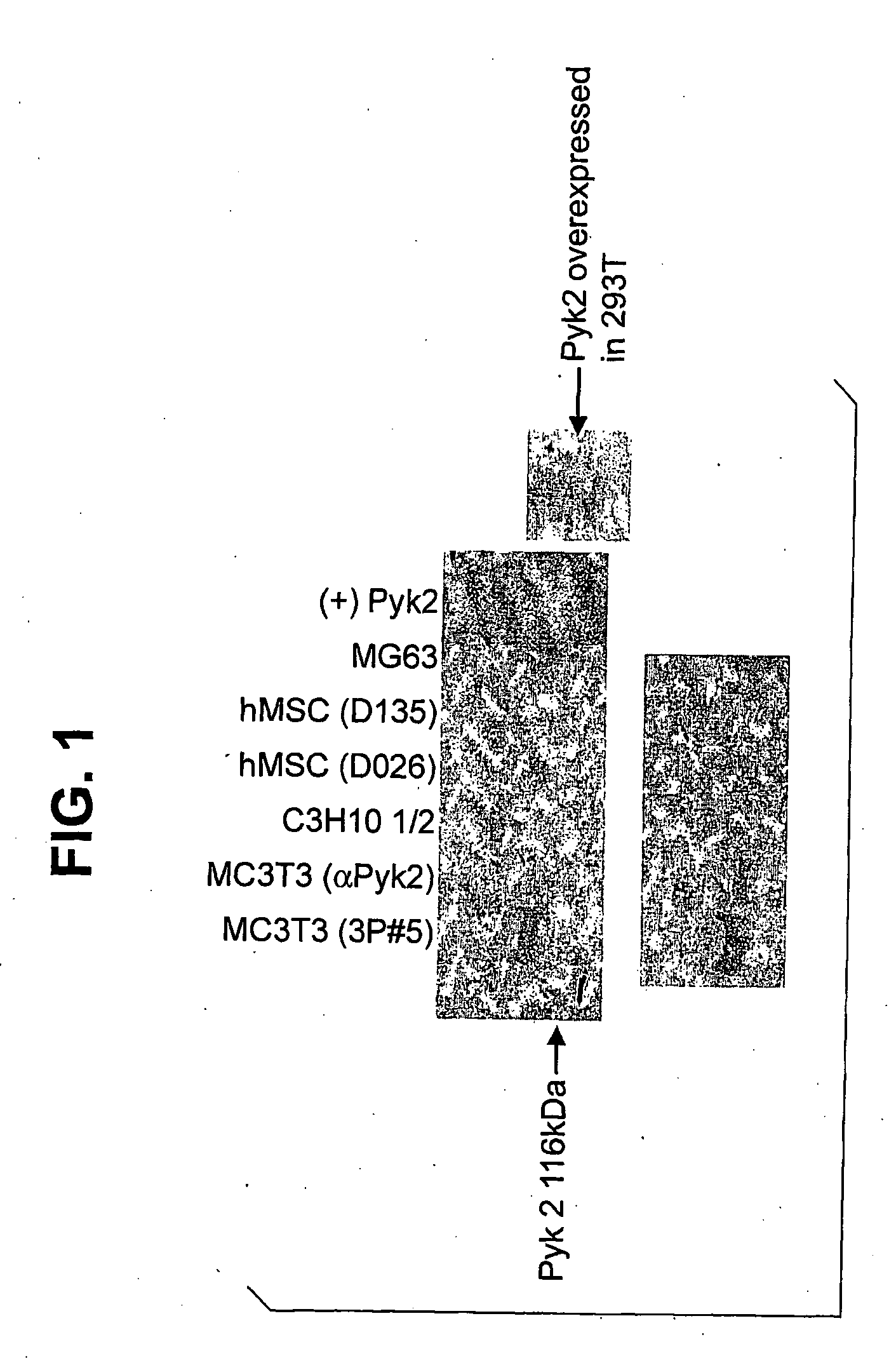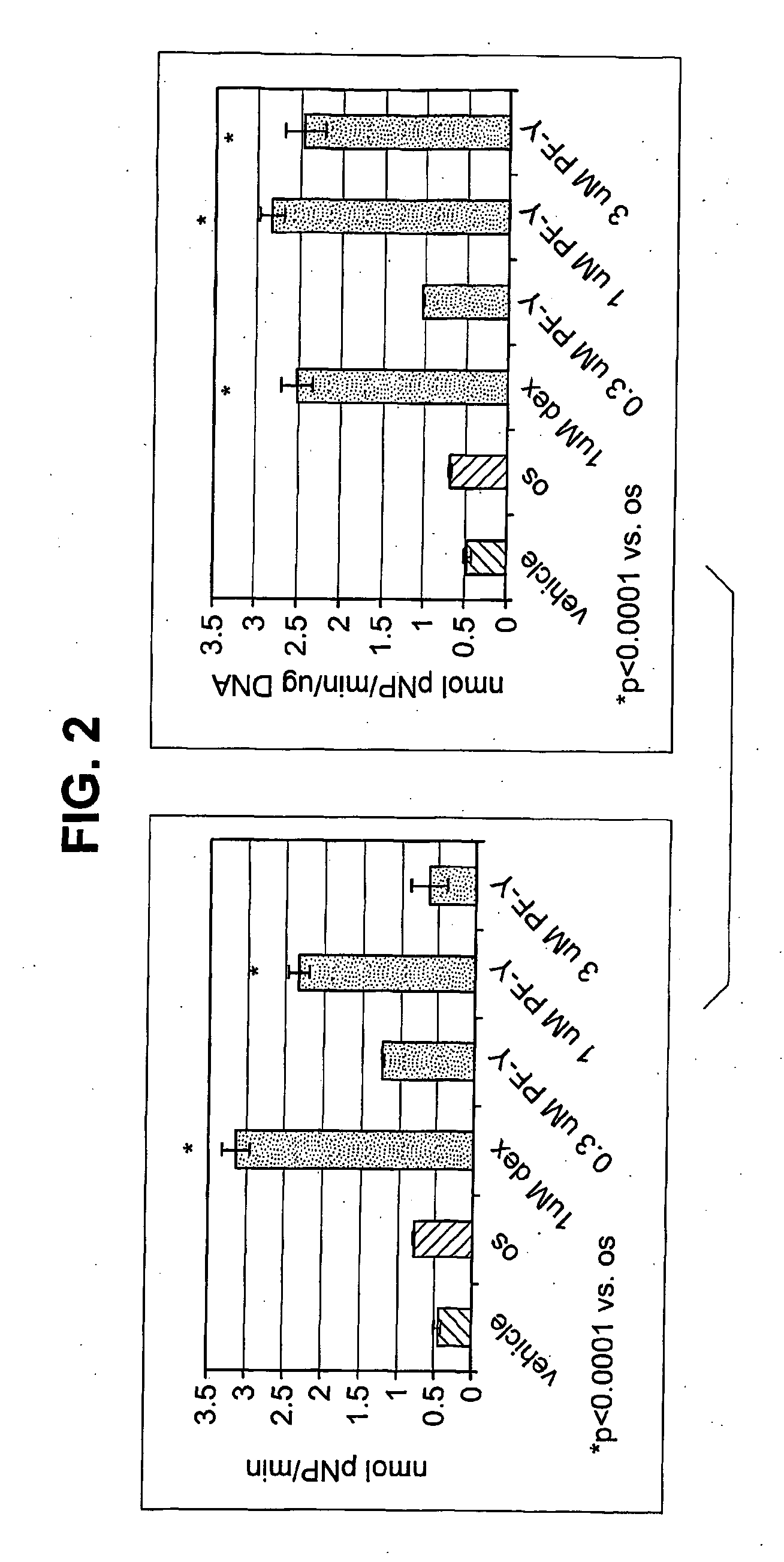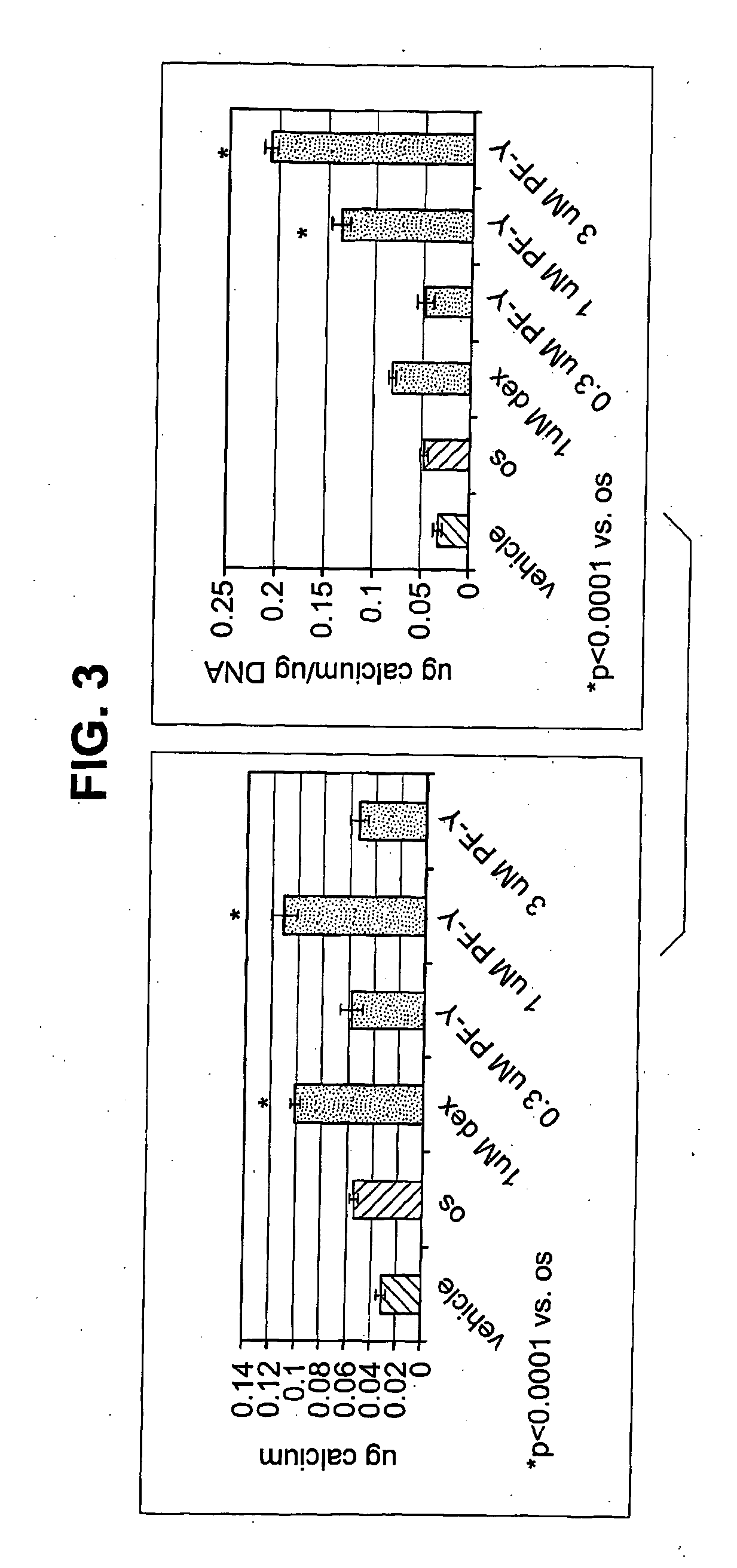Methods for Augmenting Bone
- Summary
- Abstract
- Description
- Claims
- Application Information
AI Technical Summary
Benefits of technology
Problems solved by technology
Method used
Image
Examples
working examples
[0236]Having now generally described the invention, the same will be more readily understood through reference to the following examples that are provided by way of illustration, and are not intended to be limiting of the present invention, unless specified.
example 1
[0237]PYK2 SDS PAGE Blot. Lysates from murine (MC3T3 and C3H10T1 / 2) and human (mesenchymal stem cells from 2 donors and MG63) osteoblast cells were Immunoprecipitated with a polyclonal anti-PYK2 antibody (3P#5 or Santa Cruz anti-PYK2). Immunoprecipitated PYK2 was resolved by SDS-PAGE, blotted onto PVDF membranes and then probed with the anti-PYK2 polyclonal antibody followed by HRP-linked protein A. A lysate from 293T cells transfected with a PYK2 expression vector was used as a positive control. Two different exposures of the blot are shown in FIG. 1. These results demonstrate that PYK2 is expressed in murine and human osteoblast-like cells.
Methods Used in Examples 2, 3, 4, & 6
[0238]Quantitative Alkaline Phosphatase Measurement. For quantitative alkaline phosphatase measurements, cells were washed twice with Dulbecco's phosphate buffered saline (DPBS) followed by incubation with substrate buffer (50 mM glycine, 1 mM magnesium chloride, pH 10.5) containing 1.3 mg / ml p-nitrophenol ph...
example 2
[0243]The role of PYK2 in osteoblast differentiation and function were studied by examining the effect of PYK2 inhibitors on alkaline phosphatase and calcium deposition by osteoblasts in vitro.
[0244]Murine mesenchymal stem cells isolated from femurs and tibiae of C57BI / 6 mice were cultured in alpha-MEM containing 10% fetal bovine serum (FBS) and plated in six well dishes at a density of 3×106 cells / well. The day after plating, the media were removed and replaced with media alone, in media with OS, or in OS media containing either 1 μM of dexamethasone or increasing doses of PF—Y for 21 days. “OS” medium” contains 50 μM ascorbic acid and 10 mM β-glycerophosphate. Media were refreshed every 3 days. The amount of alkaline phosphatase was measured on day 7 and day 21. The amounts of secreted calcium were determined only on day 21. The VonKossa stain was done after staining day 21 samples for alkaline phosphatase.
[0245]As shown in FIG. 2, incubation of murine MSCs with dexamethasone, a k...
PUM
| Property | Measurement | Unit |
|---|---|---|
| Density | aaaaa | aaaaa |
| Therapeutic | aaaaa | aaaaa |
| Selectivity | aaaaa | aaaaa |
Abstract
Description
Claims
Application Information
 Login to View More
Login to View More - R&D
- Intellectual Property
- Life Sciences
- Materials
- Tech Scout
- Unparalleled Data Quality
- Higher Quality Content
- 60% Fewer Hallucinations
Browse by: Latest US Patents, China's latest patents, Technical Efficacy Thesaurus, Application Domain, Technology Topic, Popular Technical Reports.
© 2025 PatSnap. All rights reserved.Legal|Privacy policy|Modern Slavery Act Transparency Statement|Sitemap|About US| Contact US: help@patsnap.com



